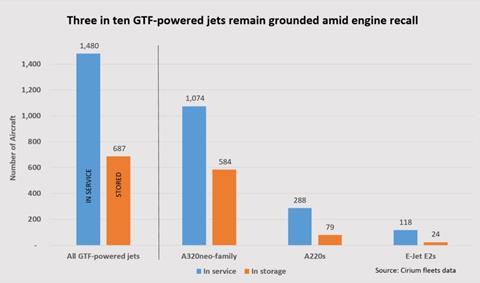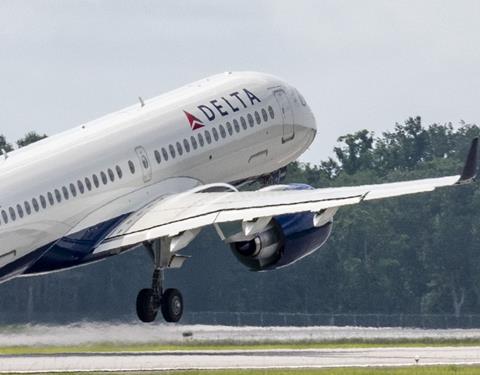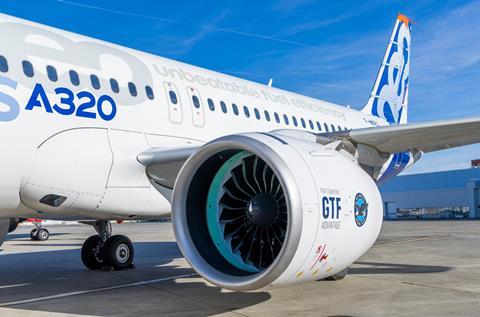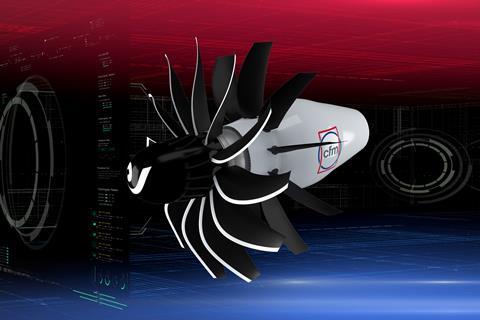The issues facing turbofan producers CFM International and Pratt & Whitney (P&W) would surely have stolen headlines in 2024 had the year not been so incredibly troubled for the broader aerospace industry.
But 2024 has been no normal year, kicking off with a 737 Max door-plug blow-out that threw Boeing’s production into upheaval. Then in September Boeing stopped producing jets in the Pacific Northwest when its machinists went on strike. Meanwhile, longstanding and persistent supply chain troubles forced Airbus this year to again trim its 2024 production target.
All that noise dominated the news, perhaps even overshadowing the significant challenges facing CFM and to a greater degree P&W. Both this year have struggled to increase production in the face of component and labour shortages, and both have been working to address durability issues affecting their best-selling turbofans.
Connecticut-based P&W has had the added heavy burden of managing a massively disruptive recall of its PW1000G, also known as the geared turbofan (GTF).

At the same time, the competitors are still diverting resources into developing novel technologies they say will make their next-generation engines much more fuel-efficient.
Of all engine news this year, none has been more consequential than P&W’s PW1000G recall, which has forced airlines globally to ground hundreds of aircraft, most being Airbus A320neo-family jets.
P&W parent RTX revealed the issue last year, saying errors during a powder-metal manufacturing process left engines with potentially defective metallic components, making them less durable and more likely to fail. High-pressure turbine and compressor disks, compressor hubs and air seals are among affected parts, according to P&W and the US Federal Aviation Administration, which became aware of the risk after a 2020 engine failure.
Affected PW1000Gs (most in-service engines seem caught in the recall) need early inspections and replacement parts – work that takes 250-300 days per engine and will result in an average of 350 aircraft being parked at any given time between now and the end of 2026, RTX has said.
The GTF family includes PW1100Gs, which are one of two engine options Airbus offers for its A320neo-family jets, PW1500Gs, which power A220s, and PW1900Gs, power for Embraer E-Jet E2s.
RTX declines to specify how many GTF-powered aircraft are now down for maintenance, but Cirium fleets data reveals the scope of the disruption.
As of mid-October, airlines globally had 2,167 GTF-powered jets in their fleets, most being A320neo derivatives, Cirium shows. But of those, it lists 687 aircraft – or 32% of the fleet – as in storage, meaning they had not moved for 30 days. The remaining 1,480 jets were in service.
The in-storage figure of 687 aircraft has increased since August, when 647 of jets with GTF engines – 30% of the fleet at the time – were stored.
To be clear, Cirium does not specify why aircraft have not moved for 30 days, and some of the stored jets were likely pulled from service for reasons unrelated to GTF recalls, such as due to hail damage, the data provider notes.
But Cirium thinks the majority of stored GTF-powered jets are likely down for recall-related engine maintenance. That makes sense, considering Cirium lists only 63 jets with CFM’s competing Leap turbofans as in storage in mid-October, or 1.8% of the 3,589-strong Leap-powered fleet. Leap-1As are the other engine option available for A320neo-family jets, and Leap-1Bs are the only engine for the 737 Max.
Of the 687 GTF jets idle in October, the vast majority – 584 – were A320neos and A321neos with PW1100Gs. Those stored jets represented 35% of the 1,658-strong global fleet of GTF-powered A320neo-family jets, Cirium shows.
Of 367 A220s in the global fleet, 79 were down in mid-October, or 22% of that fleet, while 24 of 142 E190-E2s and E195-E2s were sidelined, 17% of that fleet, Cirium shows.

Airlines in all regions are affected.
Aegean Airlines and JetBlue Airways, for instance, were each down eight A320neo-family jets in mid-October, while All Nippon Airways had 12 grounded, and Lufthansa had 11 out of service. Spirit Airlines had 22 idled and Turkish Airlines had 21 parked.
As for A220s, JetBlue had five in storage, and Air Baltic, Air Canada, Air France, Delta Air Lines and EgyptAir each had between eight and 11 of the type grounded, Cirium shows.
The recalls have had broader fallout for airlines and for Airbus. This year, with many of their aircraft unusable, JetBlue and Spirit both disclosed plans to defer deliveries from Airbus of new A320neo-family jets with the powerplants, and to curb growth plans. The moves were part of restructuring efforts by both airlines in response to factors that included over-supply of low-cost airline seats. But GTF issues played a role.
“We simply can’t afford to continue taking delivery of costly new aircraft that may need to be parked due to engine availability issues,” JetBlue chief financial officer Ursula Hurley said in July.
In September, Airbus chief executive Guillaume Faury said shortages of engines and other components including cabin parts would leave the manufacturer challenged to hit its 2024 delivery target.
“Pratt is really at a… difficult place, in a difficult time, in their history. But they are doing what they said they would do,” Faury said. “We have accepted to significantly reduce the number of engines that would go to Airbus, to give better support to the [in-service] fleet.”
The comments came after Airbus in June revised its 2024 delivery goal to 770 aircraft, down from a previous target of 800.

Also in September, RTX CEO Christopher Calio said the GTF recalls were tracking to the company’s expectations, noting P&W has completed 6,000 inspections, with findings “consistent with what we assumed they would be”.
Maintenance shop capacity and availability of components – specifically cast and forged metallic parts – are top factors limiting the pace of recall-related work, he added, saying: “We continue to fight through material flow”.
RTX will likely disclose more details on 22 October, when it plans to release its third-quarter financial results.
P&W has been tackling the GTF recall as it seeks to increase GTF production. It has had to juggle allocation of scarce engine components between new and used powerplants.
Meanwhile, it is working to introduce its GTF Advantage, an updated PW1100G variant it says will produce 4% more thrust and be 1% more efficient. P&W has said it expects the Advantage will enter service in 2025.
“We are going through the development and certification process right now,” Calio said in September. “We are really, really focused on the durability of that engine coming out of the box. We have learned our lessons from the prior iterations of the GTF.”

P&W shipped 468 large commercial engines (which include GTFs) in the first half of 2024, up from 358 one year earlier.
While not hobbled by massive recalls, competitor CFM – owned jointly by GE Aerospace and Safran Aircraft Engines – faces its own production troubles and durability hiccups.
“Our new-engine output was disappointing,” GE CEO Larry Culp told investors on 23 July during the company’s second-quarter earnings call. “We are making some progress, but not enough to meet demand. Overall, we are not yet at a desired state.”
CFM delivered 664 Leaps in the first half of this year, down 15% from 785 deliveries in the same period of 2023. Culp has said factors including limited availability of precision metallic parts have been holding up production.
More recently, CFM has faced a new headache, the result of an ongoing strike by Boeing’s unionised machinists, who walked off the job on 13 September, forcing Boeing to stop producing jets in the Pacific Northwest – meaning 737s, 767s and 777s. It has continued producing 787s at its non-unionised site in North Carolina.
In response, Boeing is asking suppliers to stop shipping components to its Pacific Northwest assembly sites. Exactly how the strike has affected production by CFM, GE and Safran remains unclear.
Asked to comment, GE says only: “We are committed to supporting our customer and continue to produce components and engines to meet the industry’s demand.” The engine maker is also scheduled to disclose its third-quarter financial results on 22 October, meaning more details may be forthcoming.
GE has been contending with its own durability issues, including those involving Leap high-pressure turbine blades and fuel nozzles. Leap engines operated in dusty regions such as the Middle East have been particularly susceptible.
In March, GE executives insisted they are addressing the problems, saying engineers had completed a fuel-nozzle fix. “What is changing is the addition of a reverse bleed system that provides cooling air after engine shutdown, thus mitigating the coking of unburned fuel in the nozzles,” the company said.
GE added that it intends this year to introduce improved Leap high-pressure turbine blades, noting the original blades can develop “wrinkles” when subjected to dust.

GE and CFM partner Safran also spent this year responding to a high-profile case involving sales in recent years of unapproved engine components by UK parts supplier AOG Technics. CFM had been particularly affected, reporting that dozens of CFM56s contained parts that might have carried falsified documentation.
In response, GE in February formed the Aviation Supply Chain Integrity Coalition, charging it with identifying means of keeping fake parts out of engines. Members included Airbus, American Airlines, Boeing, Delta, Safran, maintenance firm StandardAero and United Airlines.
In October, the group published a report calling on airlines and maintenance shops to only source engine components from accredited suppliers. It also urged industry to create an entity to oversee suppliers, to form a database of accredited vendors and to adopt greater use of digital documentation records.
“The actions that we are calling for are voluntary actions that industry can take now. They supplement any efforts by regulatory authorities,” coalition co-chair and former US National Transportation Safety Board chair Robert Sumwalt said in October.
Atop all that, P&W and CFM are locked in a competitive race to develop significantly more-efficient turbofans to power the future narrowbody jets Airbus and Boeing are expected to introduce next decade. Those aircraft manufacturers have said they want their next narrowbodies to be about 25% more efficient than today’s models, though engines would need not deliver all the improvement.
P&W is tackling the challenge by promising an improved, second-generation GTF. Chief sustainability officer Graham Webb said earlier this year that improvements could include better optimisation of workload between low- and high-pressure spools, an increased gear ratio, a wider fan and use of lighter and more-heat-resistant materials like ceramic matrix composites. Those changes could achieve 20% efficiency gains at an aircraft level, while adding a hybrid-electric component could possibly deliver another 5%, he said.
P&W is collaborating with Collins Aerospace – also an RTX subsidiary – to develop the hybrid-electric technology, with plans to flight test a hybrid propulsion system using a modified De Havilland Canada Dash 8-100 turboprop.

CFM has taken a different path, turning its attention to developing a clean-sheet open-rotor engine under its Revolutionary Innovation for Sustainable Engines programme.
Open rotors lack nacelles and other surrounding structures like containment rings, allowing for larger fans without the drag penalty imposed by those structures, resulting in improved efficiency.
But challenges must be overcome. Open rotors are inherently louder than turbofans and engineers must find means of ensuring engine components do not damage critical structures in the case of engine failures. Whether Airbus and Boeing will take a chance on the designs also remains up for debate.
But GE insists it has a winner with its open rotor. Counterpart Safran has started windtunnel testing an open fan that is one-fifth the scale of the ultimate envisioned engine. The companies are also developing a “compact core” that burns hotter and at higher pressures than today’s designs, and are studying hybrid-electric systems.
GE and Safran aim by mid-decade to begin ground testing their open-rotor demonstrator, and in the second half of the decade intend to begin flight tests using an A380.
“Together with our partner Safran… we decided to put a line of the sand,” GE vice-president of engineering Mohamed Ali said earlier this year. “We set an ambitious goal.”

























